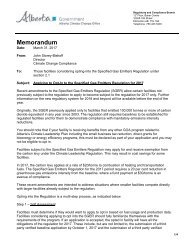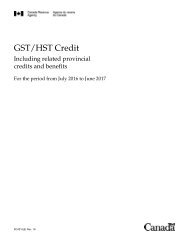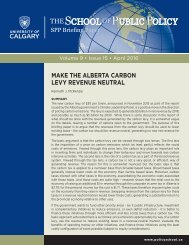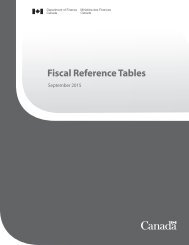China’s National Emissions Trading System
Chinas_National_ETS_Implications_for_Carbon_Markets_and_Trade_ICTSD_March2016_Jeff_Swartz
Chinas_National_ETS_Implications_for_Carbon_Markets_and_Trade_ICTSD_March2016_Jeff_Swartz
Create successful ePaper yourself
Turn your PDF publications into a flip-book with our unique Google optimized e-Paper software.
Global Economic Policy and Institutions<br />
vii<br />
EXECUTIVE SUMMARY<br />
<strong>Emissions</strong> trading is gaining traction as the preferred type of carbon pricing policy instrument for<br />
many governments around the world. The number of emissions trading schemes (ETSs) has more than<br />
tripled since 2012, going from five to 17. But the carbon markets of 2016 look very different from<br />
those of a decade ago. The world has shifted from the top-down policy architecture, initiated by<br />
the Kyoto Protocol, into a bottom-up architecture under the newly adopted Paris Agreement where<br />
governments set targets at a national level, so-called “<strong>National</strong>ly Determined Contributions” (NDCs),<br />
and adopt various policy approaches, not all of which are market-based. The current fragmentation<br />
into national and regional carbon markets may pose a challenge for creating a more globally-connected<br />
carbon market in the future. Whether such a global market emerges through bilateral linkages or<br />
plurilateral carbon market clubs, <strong>China’s</strong> participation will matter as both the world’s largest emitter<br />
of greenhouse gases (GHGs) and soon as the host of the world’s largest carbon market.<br />
China will launch a national carbon market in 2017, building on ten years of emissions trading<br />
experience, initially through the Clean Development Mechanism (CDM) and more recently through<br />
its seven pilot carbon markets. <strong>China’s</strong> national ETS will expand the scope of global GHG emissions<br />
covered by such systems from nine to 16 percent. It will include eight sectors and 18 sub-sectors<br />
which consume over 10,000 tonnes of coal equivalent per year.<br />
<strong>China’s</strong> ETS is likely to face challenges in areas that are critical for the smooth functioning of ETSs,<br />
including: ensuring compliance and enforcement; applying uniform rules on monitoring, reporting,<br />
and verification (MRV) across the country; reducing absolute emissions under the intensity target it<br />
has set as its contribution to the Paris Agreement; preventing over-allocation of allowances; avoiding<br />
low liquidity; and allowing for trading in both spot and exchange transactions.<br />
The presence of a Chinese ETS will have major implications for climate policymaking around the<br />
world and will substantially change the dynamics and status quo of current carbon markets. With an<br />
expected cap size of at least four billion tonnes, <strong>China’s</strong> ETS would be twice the size of the European<br />
Union’s ETS and greater than all existing carbon markets combined. The presence of a national carbon<br />
market in the country which is the world’s largest emitter of GHGs and a key player in world trade<br />
has the potential to create a dynamic towards scaling up climate action through carbon markets, for<br />
example by incentivising other countries to implement carbon pricing policies, scaling up ambition in<br />
schemes, and encouraging further carbon market cooperation. This can ultimately help support the<br />
implementation of the Paris Agreement.<br />
<strong>China’s</strong> advancements in emissions trading have already caught the attention of other major and<br />
emerging economies. <strong>China’s</strong> move towards imposing a cap-and-trade system will send a strong signal<br />
that carbon pricing is no longer just an OECD-led policy construct. As more and more countries are<br />
exploring the introduction of ETSs, the risks of carbon leakage and competitiveness distortions could<br />
be reduced, both within China and in third party countries. Over time, China may look at ways<br />
to cooperate internationally to help strengthen its market and further reduce competitiveness and<br />
carbon leakage concerns.<br />
One form of international carbon market cooperation is through the formation of carbon market<br />
clubs, where groups of countries agree to work together by following the club’s rules in exchange for<br />
exclusive membership benefits, such as the right to trade emissions units among themselves. <strong>China’s</strong><br />
participation in a carbon market club would first require that its carbon market is designed in such a<br />
way that it can be sufficiently harmonised with other systems in the future.







